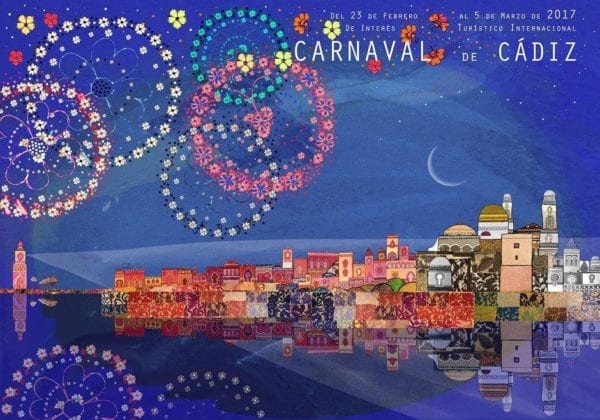When old and new collide: Banning the nymphs of Cadiz
When old and new collide: Banning the nymphs of Cadiz
When old and new collide: Banning the nymphs of Cadiz
-
Hannah
-
Hannah

Of all the mythical creatures – and there are many – the nymph has always been one of my favourites. What image does the word nymph conjure up for you? Perhaps something like this vision, painted by John William Waterhouse:

A nymph is a female deity, but a minor one. She dwells in nature, is invariably beautiful and lives to sing and dance. No wonder, then, that she provided inspiration for the great and vivid carnival that is held annually in Cadiz, setting for my latest novel Legacy.
The nymph has particular significance for the city of Cadiz, because of its ancient connection to the Greek hero Heracles (Hercules in Roman mythology). In an article I wrote last spring entitled ‘Hercules: An Andalusian hero’ I explain his connection to the city: he founded the city of Gadeira (Cadiz) en route to carrying out his tenth labour, to journey to the end of the world and take the cattle of the monster Geryon. The city had been named Gades, but by some it was called Erytheia, for one of the Hesperides – nymphs. The Hesperides were daughters of the night (from hesperos, meaning evening) who tended a garden near the mountain of Atlas where there grew an apple tree. This was no ordinary tree: it bore golden apples that bestowed immortality on any who took a bite. Stealing the apples was Hercules’ eleventh labour, which he completed successfully.
Nymphs, then, are beautiful, musical and interwoven with the legend of Cadiz’s foundation, and so they have naturally been part of the famous fiesta in the city that begins each year in February and runs for a fortnight. Until this year, that is, when nymphs are banned…
The drive for change began in earnest last year, when a core element of the carnival was altered. Traditionally, women of the city compete to become nymphs. Nine are chosen, based on their dedication to and knowledge of the carnvial, and their ability to dance the tanguillo:
Of these nine, one is crowned diosa, goddess, and she and her nymphs preside over the parade and the final of the singing competition at the Teatro Falla (for more information on the theatre, see my article ‘An inspirational composer: Manuel de Falla’).
Last year, however, Spanish News Today reported that having a female deity only had been deemed sexually discriminative, and that a male god would be chosen as well. This year, The Irish Times explains that concerns about discrimination have driven a more radical change to the programme: no nymphs at all.
According to the Times, ‘Cadiz’s leftist administration has outlawed the participation of the nymphs on the grounds that they are a chauvinistic anachronism that promotes gender inequality… The campaign’s manifesto said the parading of the nymphs and the goddess during the carnival risked generating “stereotypes, inferiority complexes and frustrations among our girls and younger women”.’
The nymphs were too passive, said those calling for change: ‘mute, quiet, a spectator, merely a beautiful figure on a float, a hostess handing out prizes, playing very much a secondary role’. They argued that the tradition, which dates back to the days of Franco’s right-wing regime, was part of the suppression of women.
Many citizens of Cadiz signed the petition to remove nymphs from the carnival, but not everyone was happy to see the end of this tradition, and a counter petition was launched.
While I can see the argument put forward by those working to ensure gender equality, it seems a shame to break with tradition so abruptly. I wonder whether instead there may be a way to empower these nymphs; to create new characters for them that are simultaneously grounded in mythology and yet also relevant for current times.
What do you think? I would love to hear your ideas and know whether, were you to visit the carnival this month, you would miss the mythological aspect.
